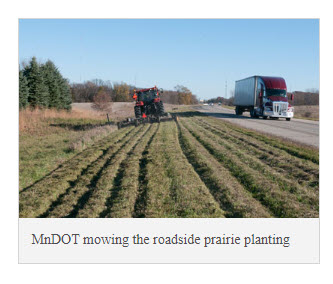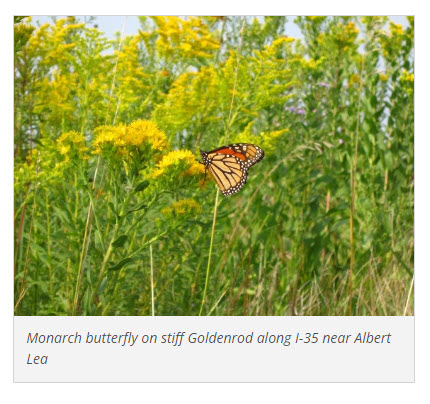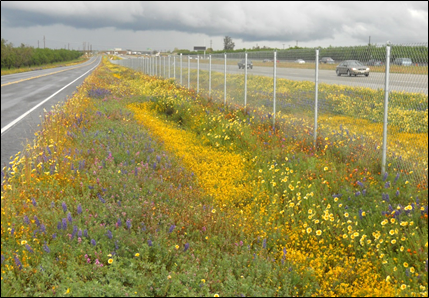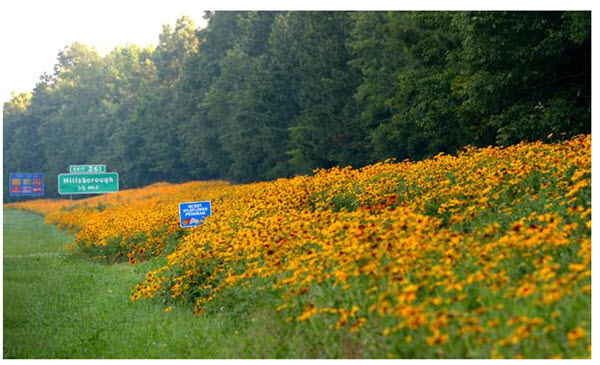Click below to listen to my 2 min. Garden Bite radio show/podcast: Pollinators and mowing roadways
There was great discussion a couple of weeks ago on my Garden Bite Facebook page regarding pollinators and mowing along roadways. It was in the comment section of my August 8th Garden Bite on how the heat affected our vegetable garden.

The questions are how much footage beyond the roadway to mow and then how often.
I never really found that question fully answered but I did find that a lot of organizations are working for pollinators. I live not far from Interstate 35 which runs from Minnesota all the way down to Mexico. It is also called the Monarch Highway. Find more information on that link as to what each state along the highway is doing.

Various State Departments of Transportation are doing what they can.
In Minnesota, the Dept. of Transportation, aka MnDOT, manages approximately 175,000 acres of green space in Minnesota. They currently plant native grasses and forbs on 30% of construction projects where soil beyond the inslope is disturbed. MnDOT manages roadsides by using integrated roadside vegetation management techniques which include mowing, prescribed burning, herbicides and biological controls.


It all sounds very grand but, with multiple organizations, putting it all into action is complicated.
Kansas and Minnesota have been planting and protecting pollinator habitat by introducing a wide variety of native wildflowers to their standard seed mixes. Spot spraying and mowing less. And more here on all our highways by the Federal Highway Administration.

The Xerces Society: says with more than 10 million acres of land in roadsides in the United States alone, transportation rights-of-way are a significant resource for pollinator conservation. In landscapes denuded of natural areas by agriculture or urbanization, roadsides, utility easements, and other rights-of-way are an increasingly important component of regional habitat networks.
Another question was whether these wildflower plantings caused more collisions between insects and vehicles.

Despite what you might think, plantings of wildflowers along roadsides actually reduce insect/vehicle collisions. By providing the resources pollinators need for miles at a stretch, they can stay far away from the roadside edge and not need to travel very far to find the resources they need. Photo: NCDOT
The PCA, Plant Conservation Alliance, is under the US Dept of Land Management. It is a public-private partnership among 15 federal agency Members and more than 400 non-federal Cooperators formed to protect native plant populations and their communities by maintaining, enhancing and restoring them.
Iowa law prohibits mowing roadside ditches each year between March 15 and July 15, to protect ground-nesting birds and to prevent nest destruction.
There are many things homeowners can do to help too! Clover lawns, low mow grass and No Mow May.

